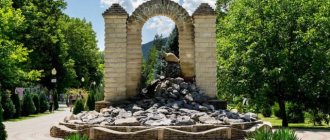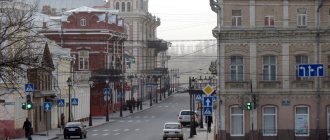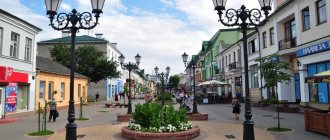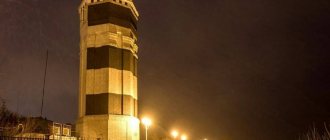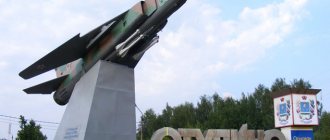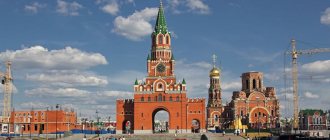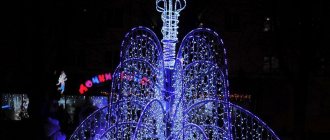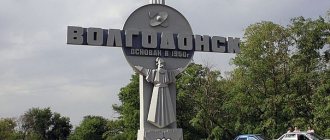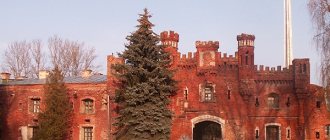Legend says that the city of Brest appeared by accident. On the way to Lithuania, one merchant got lost in a quagmire and reached a small island, making his way with the help of tree trunks. Subsequently, he founded a city on this site, which was named Berestye because of the large number of birch trees.
The first mention of the settlement dates back to 1019 - according to the Tale of Bygone Years, it was a large, well-fortified and rich settlement. It did not play a special role in political or social life, but at the beginning of the 11th century it became an important trading point on the border with Poland and Lithuania.
During military campaigns, Brest was destroyed and rebuilt several times, and it played a special role in the events of World War II. The city was one of the first to be attacked by fascist troops and heroically defended itself, despite the enemy's numerical advantage.
Monuments and landmarks of Brest are associated with its contribution to the Great Victory, its development in different periods of history and significant people who lived on its territory. When you choose where to stay, be sure to study the reviews and prices of Brest hotels to choose a decent option.
What other interesting places in Belarus near Brest and beyond can be included in your trip - in this guide.
For ease of route planning, we have marked all the mentioned attractions on the city map:
Brest Fortress
The fortress was founded in 1836, but its construction continued for another 80 years. It was built of brick. Today the fortress is a memorial complex. Previously, this place was the site of the ancient border city of Brest-Litovsk.
The fortress was rebuilt and strengthened several times. After the First World War, it became the site of the shameful Treaty of Brest-Litovsk. The fortress then became a Polish possession. During the Second World War it was captured by the German army, but then transferred to the Soviet Union. After 2 years, the fortress once again survived an attack by the Nazis, but survived thanks to the desperate resistance of its defenders.
Fifth Fort of the Brest Fortress
The building appeared in the 70-80s of the 19th century. Today a branch of the memorial complex is organized here.
The fort was part of a defensive system that was created to stop the enemy at the distant approaches to the fortress. The area of the structure is 0.8 square meters. km, pentagonal shape. Brick was used for construction; the structure was surrounded by an earthen rampart with a moat, which was filled with water. A caponier was installed in front for 6 guns - fire could be fired in two directions.
At the beginning of the last century, the fort was modernized by covering it with a 2 m layer of concrete. After the war, the structure gradually deteriorated, but in 1997 a large-scale restoration was carried out. Today, the Museum “History of Fortification and Armament” is open here, and an impressive collection of artillery weapons is displayed in the open area.
Kholm Gate
The object is a symbol of the Brest Fortress, into the Citadel of which 4 such gates led. The building was built at the beginning of the 19th century in the neoclassical style. The external facade is decorated with turrets, which were preserved partly due to severe damage during the Great Patriotic War. The Kholm Gate was built from red brick, on which marks from bullets and shells remained as a memory.
Puppet show
The repertoire here is updated regularly. About three hundred performances are shown a year. The Puppet Theater is a landmark of Brest, which is definitely worth visiting with children. The fabulous atmosphere that reigns here will not leave any child indifferent.
The Brest Regional Puppet Theater is located at 15 Partizansky Prospekt. The repertoire includes performances designed for children aged three years and older. For example, “Talking Jug”, “Golden Chicken”. This theater is one of the organizers of the international festival “White Vezha”.
Obelisk bayonet
The main monument of the Brest Fortress as a memorial complex. The design appeared in 1971. Its height is 104.5 m, and its weight is 620 tons. Towards the base it thickens to 5.5 m.
The obelisk bayonet is the bayonet of the famous “Three Line” - this rifle was in service with the Soviet Army during wartime. The monument is a symbol of the victory of the Soviet people over the Nazis. The obelisk consists of 10 sections, has a steel frame and is lined with titanium sheets. The monument is visible from afar, and in the Brest Fortress it can be seen from anywhere.
Parks and monuments, streets
Lantern Alley
Address: st. Gogol
The alley of forged lanterns in Brest was opened in 2013 in honor of one of the anniversaries of the liberation of the city from the German occupiers.
The project was initiated by Mayor Alexander Palyshenkov, and funds were raised by large sponsoring enterprises. The author of the lanterns was the famous Brest sculptor and blacksmith Alexander Chumakov.
Each of the lanterns represents a separate art object with its own theme (sculptures of representatives of different professions, a globe lantern, a lamp with a still life, etc.). Since the alley is located on Gogol Street, there are lanterns dedicated to the writer’s work.
Lucky Boot
Address: st. Sovetskaya, next to the TOPO store
The “Lucky Boot” monument was erected in honor of the opening of one of the shoe stores.
Associated with it is a legend about a woman Anna Alexandrovna Levitskaya, who lived in Lviv, who owned magic boots that brought financial well-being. She inherited them to one of her sons, and he passed them on to his descendants, thanks to which the whole family was prosperous and successful.
The object is a boot, which, according to rumors, is exactly copied from the “magic” shoe.
Winter Garden
Address: st. Mitskevicha, 28/1 Phone: +37 Opening hours: Wed.-Sun. 11:00-18:00 Cost: 2 bel. rubles, excursions are paid separately
Winter Garden is an educational complex near the building of the old university named after. Pushkin. It consists of sections dedicated to several climatic zones (tropics, subtropics, desert), each of which features characteristic plants. In addition to flora exhibits, the Winter Garden has ichthyological and ornithological components with rare species of fish and birds.
Monument "Courage"
Address: Memorial complex Brest Hero Fortress
The monument is part of the ensemble “Brest Hero Fortress” and was created in 1971 by Moscow sculptor Kibalnikov. It represents the figure of a fighter against the background of a 36-meter high banner.
Compositions related to the events of 1941 are engraved on the reverse side: “Attack”, “Meeting”, “The Last Grenade”, etc. The Eternal Flame is lit in front of the monument and a guard of honor stands.
Monument "Thirst"
Address: Memorial complex Brest Hero Fortress
The sculptural composition “Thirst” is part of the ensemble of the Brest Fortress and is located on the left bank of the Mukhavets River. It illuminates one of the saddest pages of the heroic defense - the lack of water.
The events took place in the hot summer, and the defenders' water supply was damaged in the first days of the attack. Many soldiers died trying to bring water from the river for children, women and the wounded, as the banks of Mukhavets were shot at from all sides. In memory of the victims, a monument was erected here in the form of a figure of a soldier with a helmet in his hand, crawling towards the water.
Museum of the Defense of the Brest Fortress
In the northeastern circle of the Citadel, only the Engineering Barracks on the central island survived. It was here that the museum was opened in 1956. Red and black illuminated stands create a special impression. In the museum you can see military uniforms on mannequins, items from peaceful life before the war, all sorts of finds from the battle site, and aircraft bombs mounted on the ceilings.
The museum's exhibition is extensive and occupies 10 halls. There is a separate exhibition with cold steel and small arms from the 18th to 20th centuries. Temporary thematic exhibitions are regularly held.
Museum "Saved Art Treasures"
The Brest Museum “Saved Art Treasures” is unique in that all exhibits were confiscated by customs officers during illegal attempts to take them abroad. The museum is also called the “Brest Louvre”. Since 1953, the museum’s exhibition has accumulated more than 4,000 items. In 10 halls you will see jewelry, including works by Faberge and Ovchinnikov, dozens of icons from the 16th to 20th centuries, antique furniture, paintings (there are even paintings by Vrubel, Leger and Aivazovsky), bronze and porcelain, Caucasian daggers, Rostov enamel and much more other. A separate room is dedicated to Belarusian customs and customs officers. The largest part of the exhibition is occupied by Russian icon painting - two halls are devoted to it. The museum has been operating since February 4, 1989. The museum is located in the estate, built in 1925-1927 by the Polish architect Julian Lisiecki. The building is an architectural monument of Belarus.
Address:
st. Lenina, 39.
Working hours:
from Tuesday to Sunday from 10:00 to 18:00. Monday is a day off.
St. Nicholas Cathedral
The temple is located on the territory of the Brest Fortress and is a monument of the Russian-Byzantine style. Construction of the cathedral began in the mid-19th century and took approximately 20 years.
The basilica has three aisles with a stepped composition and sloping cylindrical roofs. The main facade is a two-tier semicircular arch. The first tier is highlighted by an arched entrance portal, the second - by an arcature of 5 bays with a chiming clock above it. The naves are separated by powerful arcades and have barrel vaults as ceilings.
The cathedral contains several shrines. The most prized icon is the one with a particle of the relics of St. Nicholas the Wonderworker. There are also images with particles of the relics of other saints - the Great Martyr Panteleimon, the Blessed Matrona of Moscow, the Saints Amphilochius and Job of Pochaev. The cathedral contains particles of the relics of other revered saints, as well as the Life-giving Cross of the Lord.
Soviet street
It is located in the city center and is pedestrian. It is often called Brest Arbat. In 2009, reconstruction was carried out, after which the street became a popular tourist attraction and one of the favorite places for walks among citizens.
The length of Sovetskaya Street is approximately 1.7 km. A special atmosphere here is created by stone estates from the beginning of the last century; the facades of some of them are very picturesque. For lighting, forged lanterns are installed, there are flower beds, small sculptures, and many restaurants and shops.
Sovetskaya Street has changed several names over its history, the last one it received in 1944. At its beginning there is one of the city's attractions - St. Nicholas Fraternal Church.
St. Nicholas Brethren Church
The temple was built at the beginning of the last century in the Russian-Byzantine style. Previously, there was a St. Nicholas Cathedral made of stone here, and at the end of the 19th century, with the revival of the St. Nicholas Brotherhood, a Fraternal Church made of wood appeared. A year later there was a fire, in which only the icon of St. Nicholas remained from the temple. A temporary wooden church and a stone chapel were erected, and then a modern stone temple was built.
The church is cross-domed. It rests on a high plinth and is distinguished by a high octagonal belfry with an open upper tier, completed by a high tent with a dome.
The interior is notable for its painted vaults and its relics:
- image of St. Nicholas the Wonderworker;
- a particle of the tree of the Life-giving Cross of the Lord;
- Holy Crucifixion;
- a piece of the Calvary stone from Jerusalem;
- relics of the Venerable Martyr Afanasy Filippovich.
What to see first in Brest
It does not look like a traditional European town in the usual sense, although, of course, the clean streets, cultural population and developed infrastructure are impressive. We invite you to get acquainted with the best sights of Brest and form your own impression of this border Belarusian city.
Brest Fortress
The facade of the Kholm Gate of the Brest Fortress.
A legendary place, a hero fortress... What to see in Brest in 1 day, if you are passing through the city? Of course, the Brest Fortress. The ruins of fortifications, casemates, a moat and, of course, the memorial itself remind us of the war days. I was impressed by the sound design: music sounds near the Stella with the Eternal Flame, touching, giving goosebumps. Competent organization of the exposition, ensuring easy perception of information. Otherwise, it’s a pleasant place, a beautiful well-kept park.
Official website: https://www.brest-fortress.by/
Monument "Courage"
The “Courage” Monument is a huge concrete figure of a warrior against the background of a banner.
Not a single trip to Brest is complete without visiting the monument. A warrior with a banner is the main compositional element of the Brest Fortress. Guides in Brest will tell you how technologically complex the work on its creation was. On the back side are carved historical excerpts about individual episodes of heroic defense.
Official website: https://www.brest-
Monument "Thirst"
The sculptural composition “Thirst” in the Citadel on the left bank of the Mukhavets river branch.
The 13 m long monument depicts an unknown soldier who, holding a helmet in his hands, is trying to reach the source. The monument represents one of the dramatic moments of defense - the acute shortage of water. The sculptor managed to convey all the tragedy of the situation, the desperate need of the Brest soldiers. In 2004, the monument was restored by volunteers and concerned citizens.
Official website: https://www.brest-fortress.
Museum of the Defense of the Brest Fortress
6th hall dedicated to the battles for the citadel in the Museum of Defense of the Brest Fortress
There was a defensive barracks in the Brest Fortress, part of which miraculously survived. Today, a museum is equipped on this site, at the exhibitions of which tourists can see personal belongings, photographs, and documentary materials telling about the progress of the defense. On the 2nd floor there is the main exhibition, located in 10 rooms.
Official website: https://brest-fortress.by
St. Nicholas Garrison Cathedral
St. Nicholas Garrison Cathedral in the Brest Fortress at sunset.
The Cathedral on the territory of the legendary memorial was conceived as a garrison church. It was severely destroyed during the war, but at the beginning of the last century it was restored and welcomes believers. Be sure to come in and see the interior. The inside of the temple is decorated in a very unusual way, because... Restoration work continues in some places. The seven-tiered censer with 12 icons deserves special attention.
Official website: https://forts.by/
Museum "5th Fort"
The “5th Fort” Museum is one of the foremost fortifications of the Brest-Litovsk Fortress.
Preserved in its original form since its construction, the museum is a landmark of Brest. The excursion is emotionally impressive: the stories about the heroism of people and their difficult life during the war are perceived so “alive”. An interesting exhibition of military equipment in the courtyard of the museum.
Official website: https://www.brest-fortress
Archaeological exhibition "Berestye"
Remains of buildings of the 13th century in the archaeological museum "Berestye"
The remains of the ancient settlement, from which the construction of Brest began, are the property of the country. When going on a trip, be sure to plan a visit here. From above it is interesting to look at the excavation site with the streets and wooden buildings of ancient Berestye, household items and jewelry of the ancient Slavs.
Official website: https://berestje.brest.museum
Monument to the Millennium of Brest
A pedestrian street in the city center with the Brest Millennium Monument
. We will advise what to see in Brest for those interested in the history of the city. The spectacular complex personifies the collective image of the townspeople and is represented by sculptures of prominent historical figures. Its location on a pedestrian street in the center makes it a very popular place.
Sovetskaya Street
Lanterns and flower beds on Sovetskaya Street
Pedestrian street in the center of Brest. It was caught in fire more than once and then rebuilt. There are cafes, restaurants and shops here. It is interesting to watch the ceremony of lighting and extinguishing the lanterns by the lamplighter. Some recommendations concern visiting the brethren church, located at the beginning of the street.
Trinity Church in Chernavchitsy
Church of the Holy Trinity with a bell tower in Chernavchitsy
We will tell connoisseurs of worthy architecture what to visit in Brest. This church is a bright representative of the architectural mixture of Renaissance and Gothic styles. The temple was conceived not only as a religious, but also a defensive structure, as evidenced by narrow loopholes, massive walls and a high bell tower, which served as an excellent observation tower. Active Catholic Church.
Winter Garden
Ripening lemon fruits in the subtropical zone of the Winter Garden in Brest.
The building, topped with a dome, combines a greenhouse and a classroom. The garden is divided into 3 climatic zones - tropics, subtropics, desert. Entrance to the greenhouse is open to everyone, and the study areas are intended for students studying the subject in practice. Due to the number of guests, hotels in Brest are never empty.
Official website: https://www.brsu.by/
Railway station building
The station building and railway tracks at the Brest Central Railway Station
Once upon a time it was an entire castle, built in a medieval style. Parquet floors, arches, and a location far from the bustle set the mood for a romantic mood. In 1915, retreating Russian troops destroyed this beauty. The building was restored 14 years later, naturally, with the loss of its former grandeur. Today, a comfortable atmosphere for passengers has been created here.
Railway Museum
Exhibition at the Brest Railway Museum
Not far from the Brest Fortress there is an interesting collection of railway equipment. Reviews mention the possibility of access to the cabins of some locomotives. Despite the power of modern technology, the greatness of steam engines is truly impressive.
Official website: https://brest.rw.by
Museum "Saved Art Treasures"
Exhibit of the museum “Saved artistic treasures”
This museum is called the Brest Louvre. In addition to paintings by famous artists (Vrubel, Aivazovsky, Leger), there are talented paintings by less famous masters. In addition to the collection of paintings, the museum exhibits include antique furniture. Interesting fact: all the items in the exhibition were confiscated by customs officers when they tried to illegally export them abroad, although it remains unclear how they could try to export contraband of such size without the appropriate documents.
Official website: https://values.brest.museum.
Museum of the History of the City of Brest
The Museum of the History of the City of Brest is housed in a mansion of the early 20th century.
The museum was created at the end of the last century. The main place in the reviews is given to the map of Brest depicting the chronological development of the city. Visitors are presented with 4 halls on 2 floors, each dedicated to the history of a particular period. Models of Bernardine monasteries and other archaeological finds are also interesting.
Official website: https://history.brest.museum.
Church of the Exaltation of the Holy Cross
Church of the Exaltation of the Holy Cross
An architectural monument, the oldest of the Brest churches. The Catholic church is a laconic rectangular building, quite modestly decorated. The severity of the building is given by a triangular pediment with towers and a rectangular porch. Many come here to venerate the shrine - the miraculous icon of the Mother of God.
Brest Regional Museum of Local Lore
Powder compact late 19th - early 20th century.
in the local history museum Some excursions in Brest offer city guests to visit the exhibition of this relatively young museum. Its extensive collection of 160 thousand exhibits is interesting. By the way, most of the above museums are branches of this institution. The exhibitions tell about the history of the region and its natural resources.
Official website: https://brokm.by/
St. Nicholas Brethren Church
St. Nicholas Brethren Church on a sunny summer day.
A striking building in the Russian-Byzantine style can be seen from afar. The bright exterior design is not inferior to the interior decoration. The interior is lavishly decorated with paintings, and the three-tiered iconostasis is beautifully made of wood. Believers come here to venerate the relics of saints and part of the Tree of the Life-Giving Cross of Christ.
Official website: https://stnikolas.hram.
St. Simeon's Cathedral
The five-domed Orthodox Brest St. Simeon Cathedral in the Russian-Byzantine style is
the main Orthodox church of the city with a high attendance rating, built in the second half of the 19th century. Decorated without unnecessary pomp, in white and green tones. It contains the relics of saints. Interesting fact: 5 gilded domes were donated by the mayor of Moscow. Thanks to the accent lighting, the cathedral looks especially beautiful in the evening.
Official website: https://soborbrest.by/
Holy Resurrection Cathedral
Holy Resurrection Cathedral with a separate bell tower of the temple.
This is perhaps the most majestic temple in Brest, 41 m high without a cross. When entering the city it is impossible not to notice it. It consists of an upper and lower building, with a separate bell tower. The interior is decorated with modern frescoes. The temple is dedicated to the 50th anniversary of the great Victory.
Official website: https://voskresenskiy.by/
Church of the Exaltation of the Holy Cross (Exaltation Temple)
The temple is Catholic, it was built in the mid-19th century. The church is made in the style of classicism and is considered an architectural monument. The building is brick, the main facade has two towers. The building was damaged during the Great Patriotic War, after which it was completely rebuilt.
The building has a rectangular shape. The church has three naves, the division is provided by 8 columns. The central nave ends with a semicircular apse and there is one sacristy. The main facade is vertically divided into 3 parts by pilasters, and it is completed by an attic wall.
The temple is notable for one of the most revered Belarusian icons - the icon of Our Lady of Brest. This is a copy of an image from the Basilica of Santa Maria Maggiore in Rome.
St. Simeon's Cathedral
This Orthodox church is also called the Cathedral of Simeon the Stylite. This is an architectural monument of the Russian-Byzantine style. It was built in the 60s of the 19th century.
The temple has a centric composition; its plan has the shape of a cross. The cathedral has a square plan and stands on a high paneled plinth. There is a narrow porch and a semicircular apse. The cathedral is completed by a five-domed structure, which was covered with gold leaf at the end of the last century.
The temple has three aisles, the interior space is divided by columns. The central nave is connected to the choir gallery by a wide arched skylight. There is a wooden iconostasis. The cathedral icons are notable for the images of Saint Lyudmila, Saints Kirik and Julitta, and the “Lamentation of Christ.”
Church of the Tikhvin Icon of the Mother of God
The temple was built in 1999 and is still officially considered a temporary prayer room. People started coming here when the church was not yet completed, only the walls stood. Even the Christmas frosts did not stop the parishioners.
The temple contains several relics: the Tikhvin Icon of the Mother of God (copy) and pieces of the relics of Orthodox saints.
The church is popular for weddings of young couples. It is believed that this promotes peace, tranquility and well-being of the family. The church has a children's Sunday school and an Orthodox sisterhood.
Churches and Temples
St. Nicholas Church
Address: st. Sovetskaya, 10 Phone: +37 Website: https://stnikolas.by Opening hours: daily 07:30-19:00
The temple was built in 1885, but just a few years later it was destroyed by fire. The decision to build a new stone church was made at the beginning of the twentieth century, and money for it was raised by townspeople, mainly participants in the Russo-Japanese War.
Certain amounts were received from Pyotr Stolypin and Nicholas II. The work was completed in 1906, at which time the temple was consecrated and opened to parishioners.
After 50 years during Soviet times, the authorities closed the church and returned it to believers only in 1990.
The peculiarity of the church is its dark blue domes, which is why it resembles a five-masted ship.
Holy Resurrection Cathedral
Address: st. Moskovskaya 271 Phone: +37 Website: https://voskresenskiy.by Opening hours: daily 07:30-19:00
The Holy Resurrection Cathedral is one of the largest religious buildings in the country, designed for 5 thousand parishioners. This is a new temple, which was built in 1995 in honor of the Great Victory and has five domes symbolizing Christ and the four evangelist apostles.
The church has a merciful sisterhood organized in honor of the Kazan Icon of the Mother of God, and a Sunday school for children.
Temple in honor of the Tikhvin Icon of the Mother of God
Address: st. Volgogradskaya, 23 Phone: +37 Website: https://tihvinskiy-hram.cerkov.ru/ Opening hours: daily 07:00-17:00
The temple was built in honor of one of the most famous Orthodox shrines - the icon of the Tikhvin Mother of God.
It was erected at the beginning of the 21st century and has characteristic features - 12 golden domes, which symbolize the 12 apostles of Christ, and a bell tower with 14 bells.
The church houses a copy of the Tikhvin icon of the Mother of God, as well as numerous pieces of holy relics, including a piece of the coffin of St. Nicholas the Wonderworker.
Church of the Exaltation of the Holy Cross
Address: st. Lenina, 34 Phone: +37 Opening hours: daily 08:00-20:00
The church was built in 1856 and is a rectangular basilica without unnecessary architectural elements.
After World War II it was closed, and the building was used for the exhibition of a local history museum. In 2001, the temple was restored and returned to believers.
Today, one of the main shrines of Belarus is kept there - the miraculous face of the Mother of God in a frame that dates back to the second part of the 17th century.
Berestye Museum
Archaeological Museum and branch of the Brest Regional Museum of Local Lore. It was founded in 1982. Archaeological excavations were carried out at this site.
The museum is unique. Its exhibitions and funds include 43,000 exhibits. Old Russian Brest was called Berestye, and its central fortified part was called Brest Detynets. It is on its exposed remains that the museum was founded, as well as on the buildings of the craft settlement of the 13th century.
Berestye includes more than 1100 sq. m of territory where streets with wooden pavements and buildings for various purposes were excavated 4 m deep. The exhibition includes almost 30 one-story and log buildings for residential and commercial purposes. All wooden elements are preserved using a special composition.
Belovezhskaya Pushcha - prices
- Sightseeing tour of Belovezhskaya Pushcha + Museum of Folk Life: 100,000 adults/60,000 children
- Museum of Nature (5 halls with collections of flora and fauna): 25,000 adults/12,000 children
- Nursery: 20,000 adults/10,000 children
- Residence of Father Frost: 85,000 adults/70,000 children
The price list on the website is very detailed, from museums to coal for barbecues. Official website of Belovezhskaya Pushcha: www.npbp.by
If you are planning a trip to Belarus, we recommend reading:
Mir Castle - impressions, history, how to get there
Brest Railway Museum
The institution opened in 2002. This is an open-air museum with examples of railway equipment from the beginning of the existence of railways in the country. They laid special tracks for vintage steam locomotives, since the standards used to be different. The technique can be seen in action.
In addition to steam locomotives, the museum's collection is notable for diesel locomotives, carriages, steam railway construction cranes, construction and repair equipment. All exhibits are in excellent condition. You can not only examine them, but also find out all the information you need about their history and work.
The museum’s special pride is a 1926 steam locomotive and a carriage that is 11 years older than it.
Streets of Brest
It often happens that we live in a city for many years, but we don’t know about the existence of some “attractions”. The article Mysterious Brest: what the old courtyards hide will interest even old-timers - it will be a reason to take a walk with the children to unfamiliar places. Walking around Brest with a child: in search of a fairy tale, will become exciting and interesting if you think through the route in advance and don’t forget your camera.
Park named after the First of May
City park of culture and recreation. It is popular with city residents of all ages. More than a century ago, the park was presented to the city by Russian soldiers of the Libau garrison of Brest-Litovsk.
Initially, the park area was 4 hectares, but gradually it expanded, reaching 20 hectares. This is a magnificent green area; the dendrological collection includes both traditional specimens for this area and rare species. The trees are looked after, so all plantings always look picturesque.
On the territory of the park there are several reservoirs with bridges over canals and openwork fencing. The paths are lined with paving slabs imitating natural stone, there are benches and gazebos for relaxation.
Waterfowl live in the park's reservoirs. On the territory you can see squirrels and forest birds, for which there are feeders. All the living creatures can be fed and even photographed - the animals are accustomed to people.
Reserve in Belovezhskaya Pushcha
We boarded the bus and prepared to return to the parking lot to look for dads.
The bus driver made a stop at the nature reserve (nursery), where all the tourists got off. Almost everything. There were only five of us left on the bus - two mothers and three children.
But, sitting on the bus and overlooking Belovezhskaya Pushcha, we saw our dads walking around the nursery (the reserve is located in the middle between the residence and the main entrance). The dads had already walked around the nature museum and didn’t want to get bored in the parking lot. The driver had to stop again and let us out - there was no point in driving to the parking lot anymore. The driver was very unhappy with the forced stop, but opened the doors. And the seven of us went for a walk around the nursery. And they noted the fact that no one asked us for tickets to view the animals. Their dads were checked when they entered the territory of the Belovezhskaya Pushcha enclosures, but for us, who got off the bus traveling from the residence of Father Frost, no one even asked whether we had paid for the next attraction (tickets to the residence, the nature museum and the reserve are paid separately ).
To be honest, the reserve in Belovezhskaya Pushcha was not very impressive. The enclosures are spacious, which is certainly beneficial for the animals. But this benefit for tourists results in the fact that often the animals themselves cannot be clearly seen. And there are few of them. There were wolves, bison, deer, roe deer, two bears, moose, lynx and raccoons. That's all. But the kids liked it.
And we... Returning to the cars on foot, we went to look for a place for lunch. All the cafes near Pushcha were occupied for “special services,” which is not surprising during the New Year holidays.
After lunch in a nearby village, we moved on. In Belarus. Brest and its surroundings are over for us.
boundary post
Previously, the border between the city and the Brest Fortress was marked by boundary pillars, of which there were a lot. Today, only one of them, installed in 1836, has survived.
The boundary post is made of brick. Today it is located at the intersection of Gogol and Lenin streets. On the pillar there is a memorial plaque made of marble with an inscription stating that the pillar served as the border between the lands of the city and the fortress until 1915.
Park of Warriors-Internationalists
www.kakprosto.ru
Another Brest park. It appeared as a tribute to the memory of the soldiers who died in Afghanistan, as is reminiscent of the real armored personnel carrier standing on a pedestal at the central entrance to the park. If you go deep into the park, you can go on rides and satisfy your hunger in small improvised cafe vans. But most of all, Brest residents love this park because it is very reminiscent of a forest: the pine forest and birch grove there are truly beautiful, especially in autumn. Walking along the paths, you will hear the sound of a woodpecker and see nuthatches carrying seeds from the feeder. And don’t forget to take a handful of nuts with you: in the Park of Internationalist Warriors there are practically tame squirrels who will boldly come up to you and take a treat from your palm.
Parks and Attractions
Park of Warriors-Internationalists
Brest, st. Moskovskaya, 277 52.099615 23.777037
+375
Read more
Kamenets Tower
It is also called the White Vezha. This attraction is located not in Brest itself, but in its regional city of Kamenets. The structure is the tallest and best-preserved defensive tower of the Volyn type. It was built in the 13th century. The basis is the Romanesque style, there are elements of early Gothic. There are no architectural decorations.
The height of the structure is 31 m. It is round in plan, the diameter is 13.6 m, and the thickness of the walls reaches 2.5 m. The tower has a powerful foundation, its diameter is 16 m, and its height is 2.3 m. For the construction of the tower they used dark red and yellowish paving bricks. There are 5 tiers of floors inside, connected by stairs.
Kamenets Tower - memorial. For almost 70 years it has been occupied by a branch of the Brest Regional Museum.
A little about the city
According to legend, one rich merchant, while traveling to the Principality of Lithuania, could not get through, getting stuck in swampy swamps. Fortunately, many birch trees grew all around, from which they managed to make a flooring, along which the merchant and his comrades moved to the cape at the confluence of two rivers, where, in gratitude for his salvation, he erected a temple to the god Veles, and later a settlement, which he named in memory of the birch bark ford.
Currently, Brest is the regional center of the Brest region, home to about 350,000 thousand people. The economy is based on the manufacturing industry: food processing, mechanical engineering and metalworking, and light industry.
It is also an important railway and road transport hub; the airport is located 12 km from the city.
Trinity Church
You can see this attraction if you visit the agricultural town of Chernavchitsy, located 18 km from Brest. The church is a Catholic church-fortress and was built in the 16th century. Its architecture mixed Gothic and Renaissance. The temple is still active today.
The cathedral is single-nave, has a small transept, and instead of a dome there is a high gable roof. The Gothic style is reflected in the side facades and apses. The walls here are massive, there are buttresses and narrow elongated semi-circular windows. The vault has a cylindrical shape and is decorated with molded ribs and a geometric pattern.
The interior of the church is notable for its three baroque polychrome sculptures made of wood from the 18th century.
Where to go from Brest
- Kobrin
- Bezdezh
- Pinsk
- Kamenets
- Belovezhskaya Pushcha
The first three cities on this list can easily fit into a one-day excursion around Polesie: you will have time to get acquainted with the unique crafts in the village of Bezdezh (embroidered linen aprons, mead and makukha), in Kobrin you will see the Suvorov estate, and admire the architecture of Pinsk. Details here
Kamenets is a city that compares favorably with Brest in that ancient fortresses, churches and estates from the century before last have been preserved here.
Well, I told you everything about Belovezhskaya Pushcha in detail just above.
Brest is also a convenient place to start traveling around Europe. Here are just some of the cities you can go to:
- Warsaw
- Munich
- Cologne
To buy a ticket
Ostrich farm
This attraction is located in the village of Kozische. The local ostrich farm is one of the largest in Europe. The area is always clean and orderly. About 200 adult ostriches and a hundred chicks live here. They feel quite natural, and they behave accordingly.
You can explore the farm on your own or book a tour with a guide who will tell you all about the life of ostriches. You can try ostrich meat - the taste is delicate, but specific.
Sights of Brest: what else to visit in Brest?
Not all objects here tell stories about the war. Let us briefly list the main attractions of Brest, which were not directly related to military operations and were created, rather, for the soul.
Belovezhskaya Pushcha
The magnificent natural landscape of Belovezhskaya Pushcha
is an absolute landmark of Belarus, its pride. An independent walk will not be very impressive, but a guided tour will provide interesting information about the history of the forest, the vegetation and animals that live here in enclosures and in nature. In the museum you can see stuffed representatives of the local fauna. Only here is it possible to enjoy the view of a relict forest, preserved untouched by civilization.
Official website: https://npbp.by/
Brest Academic Drama Theater
Entrance to the Brest Academic Drama Theater named after the Lenin Komsomol of Belarus
The theater, located in the city center, has its own symphony orchestra and is known for original productions of famous works. Lively acting, talented directors, original plots and a wide range of genres contribute to the growth of popularity. Musicians and singers often perform here.
Official website: https://bresttheatre.info/
Alley of forged lanterns
Forged lantern Treble clef
There are interesting places in Brest that have nothing to do with military history. Opened in 2013, the alley has 30 forged lanterns. Some depict heroes of famous works, others were commissioned by investors who sponsored the creation of the alley. It is planned to further expand the collection with thematic objects.
Nemtsevich Estate
Modern view of the Nemtsevich Palace - the historical and memorial museum “Nemtsevich Estate”
Located near Brest, in the village of Skoki. Estate of the 18th century - its attraction. Today, the exhibition of the historical and memorial complex of the same name on the territory of the estate tells about the interesting and difficult fate of this family. This is the only ancient secular building that can be seen in the vicinity of the city.
Official website: https://nemtsevichi.by/
Winter Garden
This is the territory of the Pushkin Brest State University and its scientific site, but anyone can get here. A number of social categories of the population can visit the garden for free.
The winter garden is represented by three zones: tropical, subtropical and desert. For exotic species, a glass dome was specially created, resting on a base of metal and brick. This design stands out from the usual urban views.
In the Winter Garden you can see lemons and pomegranates, ferns and orchids, cacti and euphorbia, and many other species atypical for this area. Seminars, training sessions and excursions are planned to be held at this site. It is also planned to open a Magnolia and Rhododendron Garden on the territory of the university.
For information on what to see in Brest in one day, watch the following video:
In Brest there will be something to do for history buffs, connoisseurs of religious monuments, and families with children. Here you can simply walk, discovering new interesting places, or create a tourist route with specific sites to visit.
Residence of Father Frost in Belovezhskaya Pushcha
I was very afraid to go to the Belarusian Grandfather. New Year's holidays, the main Santa of the season is all in soap, tourists are like the waters in the Pacific Ocean... But I really wanted to show our five-year-old Tanya the real Santa Claus, and not the helpers who roam around kindergartens. I started growing Zen before visiting the residence of Father Frost in Belovezhskaya Pushcha back in mid-December. But! Well done Belarusians! There were crowds of people, but, thanks to the excellent organization, these crowds did not get under each other’s feet and absolutely all the guests received their share of a good mood.
A visit to the residence of Father Frost begins at the free parking lot, where cars are left and tourists travel by bus through the territory of Belovezhskaya Pushcha. During the “season” buses run frequently, almost every half hour (the schedule is at the ticket office), travel two at a time and can accommodate 110 people – that’s how many tourists are included in one excursion group.
At the bus stop, Snowflake meets the guests, leads them to the gate, and then hands them over to Grandfather’s second assistant (I forgot her name). She asks riddles and tells stories until the path outside the gate is clear of the previous group. Continuing to chat, she leads everyone further and further, steadily approaching the Tower. On the steps of the tower stand Grandfather and Snow Maiden, who make a welcoming speech and take photographs with the guests. Then Grandfather leaves, and the tourists continue along the path, already with a third assistant. It leads to the Three Fir Trees, where wishes are made, to the glade of the Twelve Months, the alley of the Zodiac signs and other entertainment.
At the end, we offer a visit to the hut, where you can receive a gift with an entrance ticket (we were given a desk calendar and a gingerbread tree in the shape of a Christmas tree). Next is free time. You can walk around the residence of Father Frost further, you can go to a cafe at the bus stop, you can go to the nursery in Belovezhskaya Pushcha.
I recommend reading: What to see in Belarus? Opinion of a Russian girl about Belarusian attractions
I did not expect that I myself would be interested and would not want to leave the residence to the main entrance to the Pushcha - there we were supposed to meet with the dads, who did not go to the residence of the Belarusian Father Frost, but went to the nature museum.
The excursion to the residence takes two hours. This time includes a round trip and a tour of the residence. But you can walk longer, no one will kick you out.
